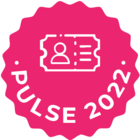Introduction
A successful onboarding journey provides guidance exactly when and where customers need it. In-app guides enable you to deliver real-time support, helping users navigate key features and complete essential tasks within your product. By using in-app guides strategically, your team can ensure that customers receive timely assistance, boosting confidence and engagement from the start. This article will show you how to use in-app guides to enhance onboarding, enabling customers to unlock value faster and with less friction.
Step 1: Identify Key Moments for In-App Support
The most impactful in-app guides address specific moments in the customer journey where users are likely to need assistance.
-
Product Setup and Configuration: Help users complete initial setup steps, such as configuring account settings and integrating essential tools. Use PX to trigger guides that walk customers through setup processes and ensure a seamless start.
-
Feature Adoption: Guide users to discover and use critical features. For example, if a customer hasn’t accessed a particular feature within the first few days, prompt them with an in-app guide that demonstrates its value and functionality. Track these behaviors using Adoption Explorer to identify which features need additional in-app support.
-
Milestone Reminders: For customers progressing through onboarding, use in-app guides to remind them of key milestones, such as completing their profile or activating their first report. Reinforcing milestones keeps users on track and engaged with onboarding goals.
Step 2: Customize In-App Guides Based on Customer Segment
Tailoring in-app guides by customer segment ensures that each guide is relevant and aligned with the user’s specific needs and expectations.
-
Enterprise vs. SMB: Enterprise customers may require more in-depth guides covering complex configurations and advanced features, while SMBs might benefit from concise, goal-focused guidance. Journey Orchestrator can help you segment customers, allowing PX to deliver segment-specific in-app guides.
-
Role-Based Customization: Customize guides based on user roles. For instance, an admin might receive guides on configuring team-wide settings, while end-users see guides for day-to-day functionalities. This ensures each user receives support tailored to their specific responsibilities.
-
Use Case-Based Support: If customers use your product for specific functions—such as analytics or collaboration—develop guides that emphasize relevant features. Use Data Designer to analyze use cases across segments and identify which features are most critical to each group.
Step 3: Track Engagement with In-App Guides and Optimize Performance
Tracking how users interact with in-app guides helps you assess their effectiveness and make adjustments as needed.
-
Monitor Guide Engagement: Use PX to track metrics like completion rates and interactions with each guide. High engagement rates indicate that guides are meeting users’ needs, while low engagement may suggest areas for improvement.
-
Adjust Guide Timing and Content: Based on engagement data, refine guide timing and content to maximize impact. For example, if users are frequently skipping a guide, consider rephrasing the message or repositioning it within the product flow. By continually optimizing guides, you can ensure they remain relevant and valuable to users.
-
Incorporate User Feedback for Continuous Improvement: Gather feedback from customers on the usefulness of in-app guides, identifying opportunities to make them even more effective. Use Surveys to collect insights on the clarity, timing, and helpfulness of each guide.
Next Steps for Success
With in-app guides in place, your team can monitor engagement metrics and gather feedback to continually refine these resources. Effective in-app guides provide just-in-time support, making onboarding smoother, reducing friction, and helping customers gain confidence in using your product.
Explore More:
